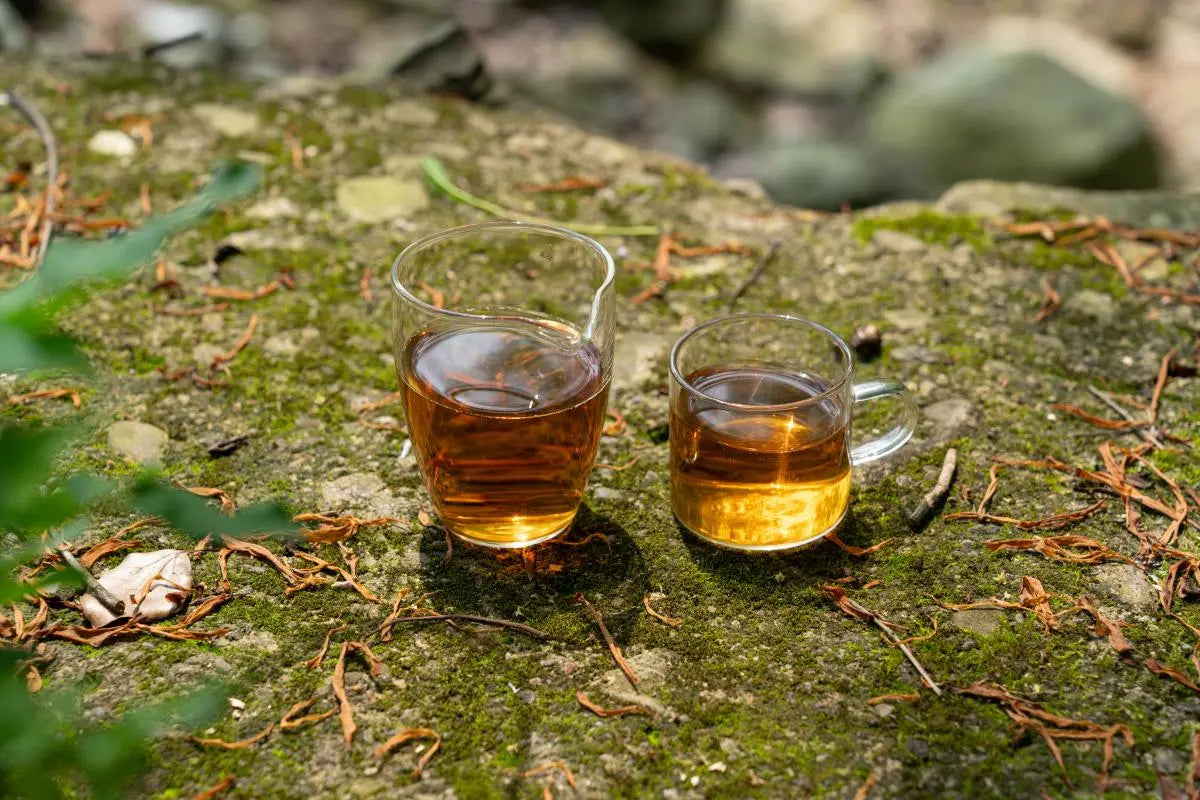Вам, возможно, интересно, что на самом деле означает китайский дикий чай?
Приведенный ниже контент может быть неполным, но мы подробно ответим на некоторые ваши вопросы.
Что такое китайский дикий чай?
Дикие чайные деревья в Китае обычно растут в глубоких горных лесах. Эти районы часто находятся в отдалении, поэтому процесс роста диких чайных деревьев не подвергается вмешательству человека; они растут и погибают естественным образом. Обычно процесс роста дикого чая не предполагает использования удобрений или пестицидов. Если вы ищете органический листовой чай , вы можете рассмотреть вариант выбора дикого чая. Пожалуйста, обязательно проверьте наличие органического тестирования и сертификации от профессиональных организаций перед покупкой, чтобы убедиться, что вы покупаете качественный китайский органический листовой чай.

Дикие чайные деревья размножаются семенами, а их разновидности и вкус чая, приготовленного из них, в какой-то степени случайны, они также обладают большей дикостью.
Откуда берутся китайские дикие чайные деревья?
- Дикий тип:
- Культивируемый тип:

В каких регионах Китая можно встретить дикие чайные деревья?
Районы распространения дикого чая обычно имеют две характеристики. Первая характеристика — наличие благоприятной природной среды, включая высокие горы и густые леса. Вторая характеристика — эти районы часто являются регионами производства чая с определенным количеством чайных плантаций.
В целом, распространение диких чайных деревьев в Китае относительно разбросано. Известно, что дикие чайные деревья произрастают в провинциях Юньнань, Сычуань, Фуцзянь, Гуйчжоу, Гуандун, Гуанси и Чжэцзян.

Почему дикий чай имеет уникальный вкус?
Другие сорта чая, такие как рассыпной чай улун , также имеют много подобных примеров. Да Хун Пао , возможно, один из лучших чаев улун , превосходного качества, произведенный в центральном регионе горы Уи, где чайные деревья растут на каменистой почве, придавая Да Хун Пао уникальный скалистый шарм. Качество знаменитого чая улун из Гуандуна, Фэнхуан Даньцун , также тесно связано с местом его происхождения, так как чаи, произведенные с высокогорных чайных деревьев, обладают уникальным горным шармом.
Видно, что такие факторы, как почва, вода, растительность и высота в районах выращивания оказывают значительное влияние на качество китайского чая . Места, где растут дикие чайные деревья, часто отдалены, с хорошим качеством воды и почвой, образованной из опавших листьев леса, известных как гумус. Поэтому дикий чай имеет свой уникальный вкус. Сравнивая дикие чаи из разных регионов, мы обнаруживаем, что они имеют общие характеристики: более насыщенный вкус, отчетливый и сильный аромат и дикое очарование. Дикий чай подходит не только для личного наслаждения, но и отлично подходит в качестве подарочного набора для ваших друзей-любителей чая.

Можно ли употреблять все виды чая, приготовленные из листьев диких чайных деревьев?
Дикие чаи, которые мы видим на рынке сегодня, — это все чаи, которые местные жители производят и потребляют уже много лет. Местные жители подтвердили, что эти дикие чаи безопасны для питья.
В нетронутых лесах Юньнани произрастает множество диких чайных деревьев. Здесь некоторые разновидности диких чайных деревьев более примитивны в эволюции и сильно отличаются от разновидностей чайных деревьев на плантациях. Свежие листья таких диких чайных деревьев не подходят для приготовления чая. Говорят, что употребление чая, приготовленного из этих листьев, может нести риск расстройства желудка.
Дикий чай уникален среди китайских чаев. Если вы заинтересованы в высококачественном листовом чае, попробуйте дикий чай. Конечно, вы также можете исследовать другие виды китайского чая с помощью пробника листового чая .
Китайский чай предлагает богатое разнообразие для исследования. Надеюсь, вы найдете больше удовольствия в мире китайского чая.











































































